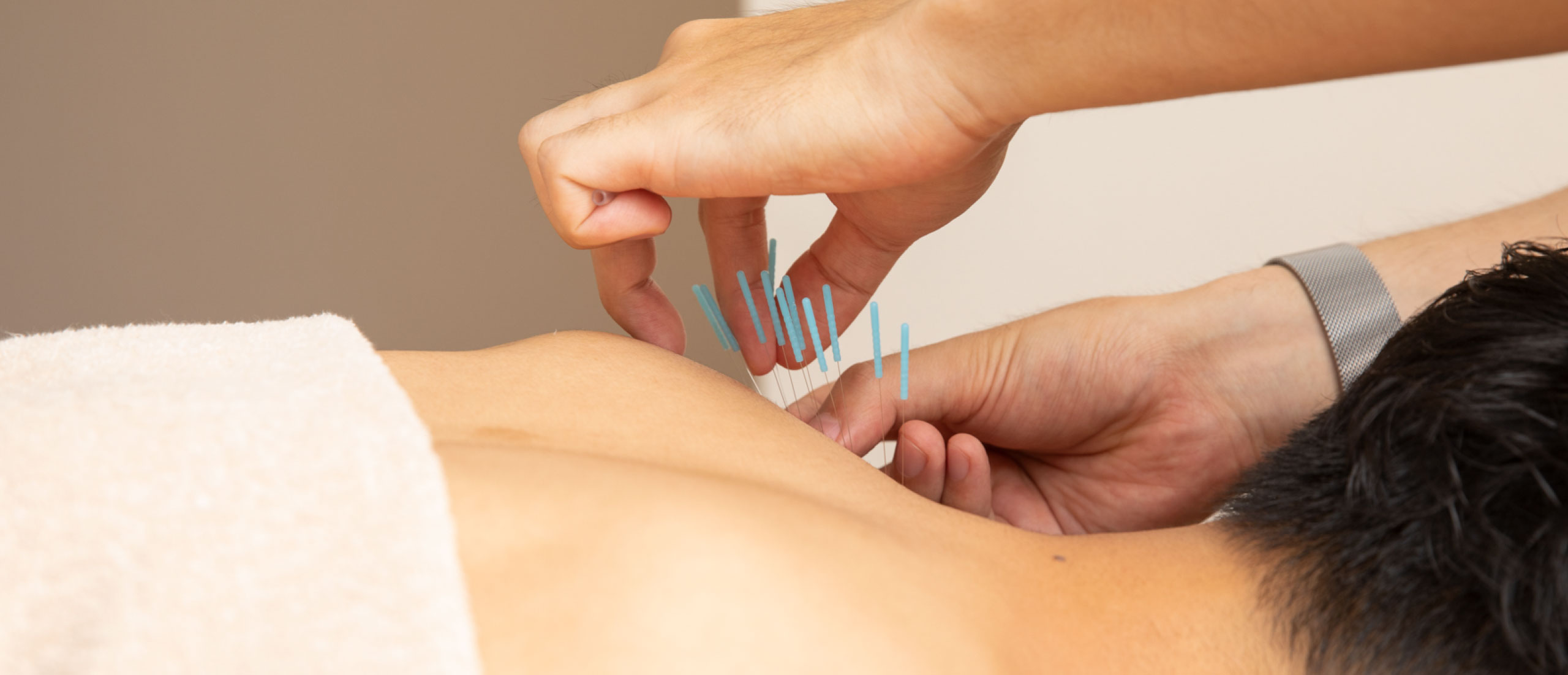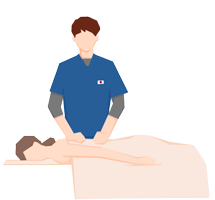in acupuncture, there is a treatment method called trigger point therapy that directly approaches the area where the pain originates. at our clinic, we have uniquely improved the technique of acupuncture using these trigger points, and with the resonant sensation of acupuncture and the certainty of manual therapy that can only be received at our clinic, we lead our patients to cure for daily pains and problems.
- About our clinic
- Access
- +81-3-6228-7003
- Japanese
What is Trigger Point Therapy?


trigger point acupuncture is
a method of acupuncture that directly approaches
the source of pain.
detailed explanation!
what is a trigger point?
- 1trigger points are effective for chronic pain diseases.
- 2trigger points are areas of hyperalgesia area.
- 3what is brain misperception?
- 4what is the sense of recognition?
- 5efficacy has been shown for autonomic symptoms
- 6
everyone can tell where the trigger points are by their daily body habits. - 7trigger points are always hidden in the body.
trigger points are effective for chronic pain diseases.
the japanese approach to chronic pain disorders is extremely lagging the rest of the world. japan is the only country that uses painkillers and medical patches for chronic pain diseases. by using accurate treatment of trigger points, it is possible to achieve a cure for chronic pain.

what is brain misperception?
for example, if you are bitten by a mosquito while sleeping at night, you may say, "my feet feel itchy. when your finger touches the bite, you recognize that this is where the bite is and that it is itchy. in other words, whether it is stiff shoulders or lower back pain, the patient may feel it in a range, but there must be a place where you feel, "that's it!

what is the sense of recognition?
"that's the bad part! that's what the sense of recognition is. manual therapy can also provide the sense of recognition, but if there are deep trigger points, the sensation will be fuzzy. acupuncture has a strong tendency to improve pain and chronic pain because it can approach deep trigger points. it is important to note that the sense of recognition is the patient's sense of "that's it, that's what's wrong with me.

efficacy has been shown for autonomic symptoms
due to the stressful life in recent years, the human body has become sympathetic nervous system tense, causing various symptoms such as lowered immune function, increased stress sensitivity, and worsening of the usual pain areas. when the autonomic nerve function is disturbed, various disorders appear in the body. when trigger points are stimulated, parasympathetic nerve function is activated, which can be expected to activate the immune system, protect against stress, and suppress pain. if you have ever had a treatment, you know that after stimulating trigger points, the digestive system, which is activated by parasympathetic nerve activity, becomes active and the stomach moves well. trigger point acupuncture, which can approach various parts of the body by approaching skeletal muscles, is a treatment that can become a preventive medicine for human activities in recent years.

everyone can tell where the trigger points are by their daily body habits.
muscles that have trigger points (trigger point intrinsic muscles) have a habit of unconsciously moving the body in the direction of stretching the muscles. for example, people who often cross their legs have trigger points in their hip muscles. people who bend at the waist or round their back have trigger points in their hips and back. people who lean their heads forward while studying or working on the computer have trigger points in their necks. it cannot be summarized in one word: you have bad posture. people who cross their legs are try not to do so because they think it is not good for them, but it is only because they have trigger points in their hip muscles. if you treat the trigger points, you will naturally stop crossing your legs.

trigger points are always hidden in the body.
even if there is no pain in the body, trigger points are hidden in the body as latent trigger points. the trigger points are activated when you carry a heavy load, sleep wrong, etc. overwork, cold, stress, lack of sleep, and ischemia can also activate trigger points and cause symptoms. to reduce symptoms, trigger points must be treated directly. even if the pain goes away with conservative treatment, it is only because the active triggers have returned to the latent triggers. any stimulus can cause pain again.

trigger point theory
there are two characteristics of muscle pain: 1) localized pain with vague pain range, and 2) associated pain (e.g., numbness in the arm due to trigger points in the 〇〇muscle in the neck).
the brain is not good at perception
for example, when you are bitten by a mosquito in the dark at night, you can only get a rough sense of where the itch is, you can't tell where the tooth decays, you can't tell where the boil on your back is... sensation is supposed to give the brain a clear shape or image of the object you are paying attention to. However, the brain cannot recognize pain or itchiness without sight, so it senses that the source of the stimulation is too large. Under the skin (deep down), there is a mechanism to feel pain in a different place than where the pain originated.
this fact is not shared in Japan, where western medicine is the mainstream, and many people have a misunderstanding of perception.
when you see and touch it, you can recognize that this is a painful part, and only then can you feel that this is a bad part of the body. if you are bitten by a mosquito in the dark, you can feel the itchy part and know that you have been bitten and that this is the itchy part. in the case of a tooth decay, the dentist may apply cold air to the tooth, and you will feel, "that hurts!”
"what hurts?" but i may think that “there may not be a place where it hurts”.
in modern western medicine, we ask, "where does it hurt?”
the painful area is the disease area. the cause is hidden deep inside. in other words, if you want to cure chronic pain that has a deep cause, asking "where does it hurt? will not work.
therapists cannot cure chronic pain unless they start from the point of view that "the painful part is not the lesion (bad part) in many cases.
Palpate and look for sore spots.
例えば肘が痛いと感じたらどうするでしょうか。やはり肘を押したり揉んでみる事により『ココが悪い場所だ』と実感します。痛いと感じた時は大きな範囲で『肘が痛い』と感じており、押したり揉んだりする事により『肘のココが痛い』という痛みの認知が起こります。しかし筋肉の走行は複雑であり、トリガーポイントの触り方に慣れていない一般の人はポイントの発見には至りません。
指が届く部位であればこの様に調べることが出来ますが、指が届かない部位の場合鍼治療でポイントを見つける必要性があるのです。
そしてそのポイントに鍼が当たれば『そこだ!そこが悪い場所だ!』と感じるのです。その感覚こそが『認知覚(にんちかく)』です。痒い所・痛い所に手が届くその感覚こそが痛覚過敏部位であるトリガーポイントなのです。
there is a lot of misunderstanding of pain in recent years
let's take the example of osteoarthritis of the knee, which is often seen in the elderly.
the patient was diagnosed with osteoarthritis of the knee based on medical findings. however, when we checked the muscles there are trigger points were found to be the responsible trigger points, and by treating these areas, complete pain relief was successfully obtained.
what this means is that the internal joint damage confirmed by the medical findings had nothing to do with the pain. treating the inside of the joint even though there is no relationship between pain → leads to an increase in chronic pain.
where trigger points are likely to form
①Where nerves are distributed (fascia, tendon, periosteum, ligament, joint capsule, etc.)
② where stimulation is repeated (muscle-bone attachments, tendon-bone attachments, etc.)
although there are differences between clinics, in our clinic, we leave needles on the trigger points for 10 to 15 minutes after the needles are applied. after the needle is applied to the trigger point, the swollen muscles will retract and the muscles around the area where the related pain is occurring will relax.
dry needling has become the focus of attention for its effectiveness beyond anesthesia
in the 1980s, anesthesiology pain clinics in japan used to inject a small amount of anesthetic into the trigger point to provide pain relief from muscle pain. but sometimes, even without injecting anesthetics, there were cases where there was an analgesic effect as if anesthetics were injected. however, this was not understood at the time.
rom this, the interest in trigger points was born, and it has developed to the present. this type of acupuncture without injecting anesthetics or chemicals is called dry needling. in europe and the U.S., some anesthesiologists used to perform acupuncture using thin needles, but the needles cut through the tissue to insert the needles, causing significant tissue damage to the muscles.
riental acupuncture needles, which can be inserted by pushing through the tissue, attracted attention.
acupuncture needles that do not inject chemicals = dry needles. dry needling is the term used to describe the procedure.
trigger point therapy was born from the idea of dry needling. and now, research is being conducted on pain relief for pain and numbness.
myofascial pain syndrome (MPS)
trigger point acupuncture is an effective treatment for myofascial pain syndrome (MPS).
chronic stiff shoulders, back pain and headaches are caused by trigger points that form in the muscles. in most cases, numbness and pain are also not caused by bones or nerves.
even in cases diagnosed as herniated discs or spinal canal stenosis by diagnostic imaging such as MRI, the real cause of pain may be due to myofascial pain syndrome (MPS).

